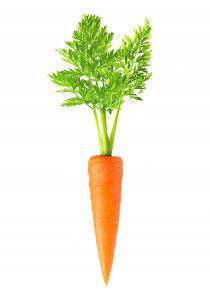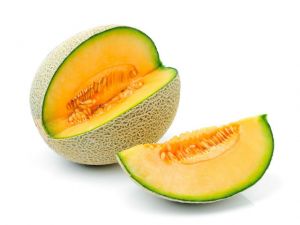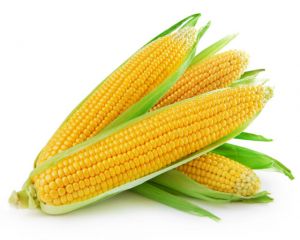
To be healthy, really healthy, your dinner plate should contain a rainbow of colors – reds, greens, blues/purples and yellows/oranges.
The more color, the better. Fresh, whole and colorful foods are packed with health-promoting properties that you don’t want to miss out on. But what exactly do these colors mean?
The wide array of colors that make fruits and veggies so visually appealing come from three types of pigment: carotenoids, which give yellow/orange vegetables their colors, flavonoids which light up blue, red and cream-colored fruits and veggies, and of course, chlorophyll, which makes the greens oh-so-green.
Each of these types of colorful compounds provides health and nutritional benefits. Knowing what each color does to help you look and feel your best is one way to be motivated to achieve that rainbow of color every time you eat.
In this article, we are going to take a closer look at yellow/orange colored foods, which offer a wide range of protective and healing qualities including the promotion of healthy digestion.
Yellow foods contain beta-carotene, flavonoids, lycopene, potassium, vitamin C and zeaxanthin. These nutrients do a number of things including reducing age-related macular degeneration, the risk of prostate cancer, lowering LDL cholesterol and blood pressure, promoting the formation of collagen and healthy joints, fighting free radicals, working with magnesium and calcium to promote healthy bones, assisting in detoxification and encouraging a healthy alkaline balance.
Digestive health
Your gut is one of the most important systems in your body. It connects your outer world with your inner world. It processes all the food you eat in some way. It absorbs nutrients you need to fuel and repair your body. It is the center of your immune system. It manufactures neurotransmitters and other proteins you need. Due to its many important functions, if something goes wrong, many chronic diseases can begin in your gut.
You need your gut to function well. If you have a health problem, you can most likely find a correlation to your gut and its breakdown or dysfunction.
Feeding your gut is imperative for healthy digestion and a strong immune system. Here are five yellow/orange foods that will soothe, protect and facilitate a happy gut.
Cantaloupes are lovely sweet fruits that contain detoxifiers and disease-fighting compounds. Rich in antioxidant vitamins A and C, cantaloupes support healthy immune function and promote digestive health. Although the fruit is really sweet, it contains a great deal of fiber which allows the sugar to enter the bloodstream slowly, keeping blood sugar levels regulated.
The high water content acts like a mild diuretic in the body, which encourages detoxification. Because cantaloupe is very easy to digest, it gives your stomach and other digestive organs a break.
Digestive health is dependent on having a break from time to time. Cantaloupe is the perfect nutritious, low calorie way to give your digestive system the rest it deserves. Eat them seasonally and when ripe. There are a great deal of nutrients in the rind and seeds – don’t be afraid to eat these as well.
Lemons
One tried-and-true property of lemons is their ability to assist in detoxifying the body, especially the liver. They are able to dissolve uric acid and other toxins in the liver, and also stimulate healthy bowel movement to flush out waste compounds. For this reason, many health experts recommend drinking warm water with lemon every morning.
Although lemons taste very acidic, they are actually alkalizing to the body, and help to normalize pH levels. This creates ideal conditions within the body for all organs and systems to function properly and maintain optimal health.
Your body works hard to digest all that you give it. Lemon juice helps flush away unwanted materials and toxins left from the digestive process. Because lemon juice is similar in atomic composition to digestive juices and saliva, it does a great job breaking down material and encouraging the liver to produce bile.
Sweet potatoes
Like most orange-colored fruits and vegetables, sweet potatoes are an excellent source of beta-carotene, the compound converted to vitamin A in the body. However, the sweet potato is unique in that it exhibits a superior ability to raise vitamin A levels in the blood as compared to other beta-carotene-rich foods.
The color-related pigments responsible for supplying the different hues of flesh among the varieties activate several enzymes and produce numerous antioxidants when consumed. Anthocyanins are found in the unique, deep purple flesh of certain sweet potato varieties.
Peonidin and cyanidin in particular are two anthocyanins that provide antioxidant protection as well as anti-inflammatory properties. When passing through the digestive system, both compounds have been found to combat heavy metals, toxins and free radical damage.
The earliest varieties of corn were red, yellow, white and black. Today, we are basically limited to white and yellow. While white corn is super sweet, yellow has more nutrient value in the form of carotenoids.
Corn is an excellent source of dietary fiber, loaded with vitamins B1 and B5, vitamin C, folate, phosphorus and manganese. One ear of corn (½ cup) has about 75 calories and two grams of protein.
Recent research has found that yellow corn contains powerful phytonutrients. In fact, although the phytonutrients in corn are bound, not free like in other vegetables, when total antioxidant activity was measured in corn compared to other fruits and vegetables, corn kept pace. Researchers feel that this may explain why cultures that consume a fiber-rich diet containing a great deal of corn have a low risk of colon cancer.
A one-cup serving of yellow sweet corn has almost four grams for fiber, most of which is insoluble. This adds bulk to stool and may help prevent constipation. In addition, it helps rid your body of toxins faster.
Mangos
Mangos, sometimes referred to as “tropical peaches,” are among the world’s most widely produced and consumed fruits. They account for an estimated 40 to 50 percent of all fruit produced for juice, canning and fresh consumption, according to Whole Foods Market.
Compared to other tropical fruits, mangos provide the highest amount of total dietary fiber. There are about three grams of fiber in 100 grams of fruit. This rich fiber content can reduce the chance of gastrointestinal disorders developing, including Crohn’s disease. In 2013, a study published in Gastroenterology revealed a strong inverse relationship between fiber intake from fruit and Crohn’s disease.
Fiber from mangos is digested and fermented, contributing to the proliferation of healthy microbiota. This, in turn, helps decrease inflammation and boosts immune system function.
In addition, this delectable tropical fruit offers a wealth of other health benefits. A 2010 study by Texas AgrilLife Research food scientists found that mangos were able to prevent or stop certain colon and breast cancer cells in the lab.
Mangos contain antioxidants such as quercetin, isoquercitrin, gallic acid and astragalin, which are known to protect against leukemia and prostate cancer in addition to colon and breast cancers.
Carrots
 Carrots are rich in various antioxidants, including the carotenoids alpha-carotene, beta-carotene and lutein.
Carrots are rich in various antioxidants, including the carotenoids alpha-carotene, beta-carotene and lutein.
As chewing a carrot increases saliva production, this helps to speed the digestive process, supplying important enzymes, vitamins and minerals. Carrots also contain phytonutrients known as polyacetylenes, two of which are falcarinol and falcarindiol. These polyacetylenes have been associated by a body of research to helping to reduce the risk of colon, lung and breast cancers, as well as to potentially fighting the growth of existing colon cancer cells.
The vitamin A present in carrots helps to protect the stomach from micro-organisms and keeps food lubricated so that it can reach the stomach. If the stomach lining is damaged, it can cause a number of painful conditions such as stomach ulcers and gastritis.
Regularly consuming carrots is known to help prevent gastric ulcers as well as peptic ulcers, indigestion and colitis. A study in the 2003 Journal of Physiology and Pharmacology notes that getting adequate amounts of vitamin A can prevent a breakdown of the stomach lining.
Making a carrot soup is a great way to naturally treat diarrhea, as it supplies fluids needed to fight dehydration as well as providing the sodium, potassium, calcium and magnesium the body needs. Carrots are also a good source of pectin, which helps to coat the intestines and prevent inflammation.
To make carrot soup, just cook about a pound of carrots in six cups of water and a dash of sea salt until soft. Puree and serve.
 Other yellow/orange foods to include in your diet:
Other yellow/orange foods to include in your diet:
- Apricots
- Butternut squash
- Golden kiwifruit
- Nectarines
- Yellow potatoes
- Yellow tomatoes
- Yellow beets
- Yellow peppers
- Yellow summer squash
- Yellow figs
- Pineapple
- Yellow winter squash
- Grapefruit
Remember: For optimal health, your plate should include fresh foods with a great variety of vibrant colors.
-The Alternative Daily
Sources:
http://www.whfoods.com



